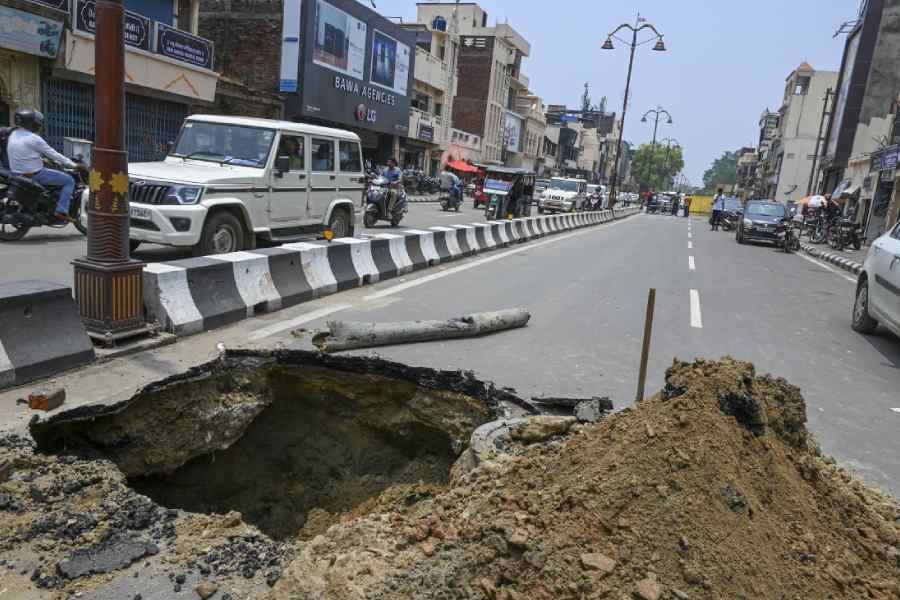The newly built Rampath in Ayodhya that leads to the Ram temple has suffered a third cave-in since seasonal rain hit the temple town on Monday.
A crater of about 1-metre radius, about half a kilometre away from the temple gate, appeared on the 13km circular road after heavy rain on Thursday night.
Monday and Tuesday had witnessed two cave-ins — one of them with a 6-metre radius — about 1.5km from the temple.
Residents also pointed to other mishaps, alleging slapdash construction in the government’s hurry to meet the temple’s pre-poll consecration deadline of January 22.
⦿ On Tuesday, the shrine’s chief priest said the roof of the sanctum sanctorum was leaking, a charge denied by the temple trust that attributed the dripping water to the continuing construction.
⦿ The newly rebuilt underground drainage system near the temple has given way, flooding streets, homes and offices, several townspeople said.
⦿ A 40-metre stretch of the boundary wall of the Ayodhyadham railway station — billed a state-of-the-art facility by the central government in January — collapsed
on Tuesday.
The Rs 311-crore Rampath, which brings tourists to the temple from the Maharishi Valmiki International Airport and Ayodhyadham station, was completed in November-December last year.
Civic authorities have now blocked a part of the road and begun repairs, forcing pilgrims into a detour. The earlier two cave-ins were repaired on Wednesday. Late on Friday, three engineers were suspended in Ayodhya on the charge of negligence.
Water has flooded many homes in the Jalwanpura locality as well as the offices of the basic education directorate and the public works department, the district veterinary hospital, and the Police Lines crossing.
“We have stopped going to office because rainwater has accumulated on the ground floor,” a PHD employee, who asked not to be named, said. He said the new drainage system had collapsed.
Ravindra Singh, a shopkeeper, said: “We never faced such problems before the temple and the roads were constructed and the drainage system rebuilt.”
He added: “It’s all because of the hurried construction by the government for political mileage. People realised this and defeated the BJP in many places, including Ayodhya.”
The BJP, which had won 62 of the 80 Lok Sabha seats in Uttar Pradesh in 2019, saw its tally slashed to 33 this time. Lallu Singh of the BJP, who had won from Faizabad (which includes Ayodhya) in 2014 and 2019, lost to Samajwadi Party candidate Awadhesh Prasad.
Satyendra Das, chief priest of the three-storey Ram temple whose top two floors are still under construction five months after the desecration, had on Tuesday said that water was leaking from the roof of the ground-floor sanctum sanctorum.
“It’s unfortunate that engineers from across the country are sitting here and building the temple but rainwater is leaking onto the ground floor through the roof,” he had said.
However, Champat Rai, general secretary of the Shri Ram Janmabhoomi Teerth Kshetra Trust, said: “It isn’t true that water is leaking from the roof of the temple. Some construction is in progress on the upper floor…. Some electricity-related work is also going on. Everything will be fine once the work is completed.”
Speaking to reporters on the road cave-ins, Ayodhya mayor Girish Pati Tripathi said: “We are taking corrective measures to prevent any recurrence.”










